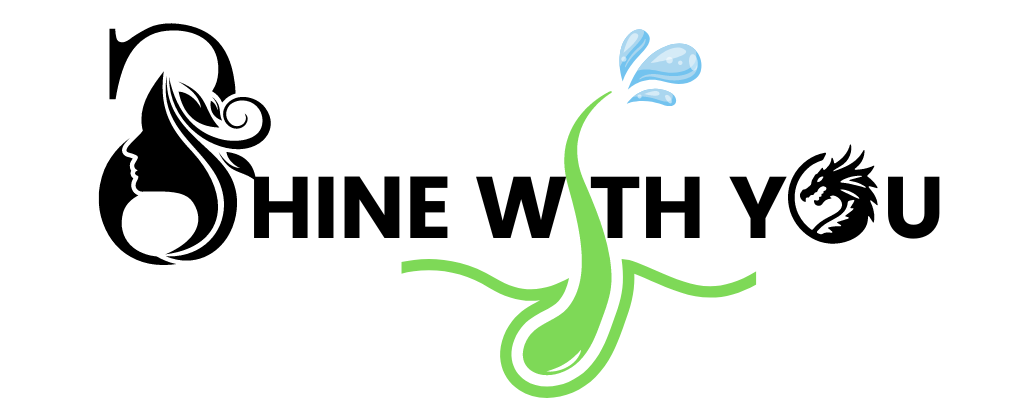Dry and damaged hair can result from heat styling, chemical treatments, sun exposure, or environmental stressors. To restore moisture and improve hair health, a combination of nourishing treatments and proper care routines is essential. Here are some remedies to revive dry and damaged hair:
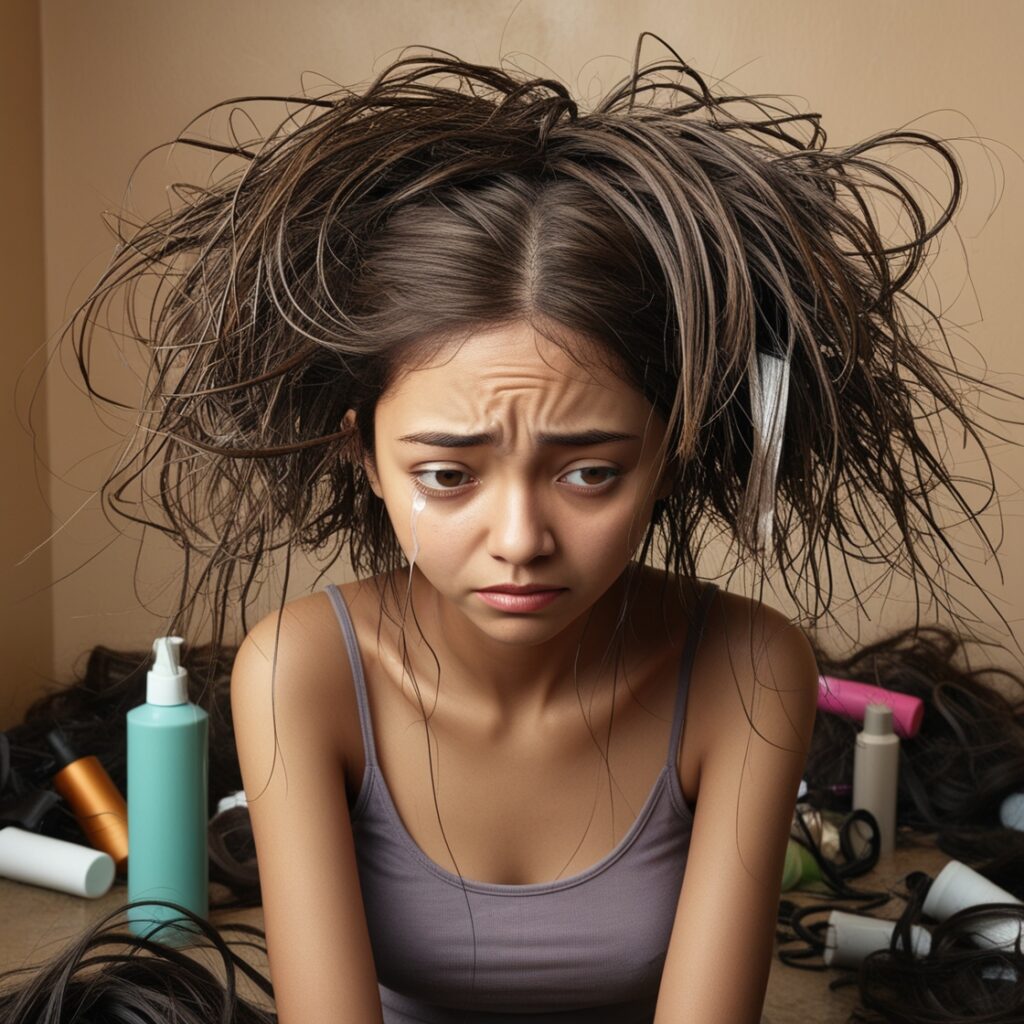
DIY Hair Mask for Dry and Damaged Hair
Ingredients:
- 1 ripe avocado
- 1 tablespoon of olive oil
- 1 tablespoon of honey
- 1 egg yolk
Instructions:
1. Mash the avocado: In a bowl, mash one ripe avocado until smooth. Avocados are rich in vitamins and fatty acids, which nourish and moisturize the hair.
2. Add olive oil: Stir in 1 tablespoon of olive oil. Olive oil is excellent for adding shine and hydration, helping to repair damaged hair.
3. Mix in honey: Add 1 tablespoon of honey. Honey is a natural humectant, which means it helps retain moisture in your hair, leaving it softer and more manageable.
4. Incorporate the egg yolk: Mix in one egg yolk, which is full of protein to strengthen hair and reduce breakage.
5. Apply the mask: Section your hair and apply the mask from root to tip, focusing on the driest parts.
6. Leave on for 30 minutes: Cover your hair with a shower cap and leave the mask on for 20-30 minutes to allow the ingredients to penetrate deeply.
7. Rinse thoroughly: Wash out the mask with lukewarm water, followed by a gentle shampoo and conditioner.
Benefits For Dry and Damaged Hair:
This hair mask helps to deeply moisturize dry hair, restore shine, and reduce frizz, leaving your hair soft, healthy, and manageable.
Avoid Heat Styling For Dry and Damaged Hair
One of the most effective ways to prevent and heal dry, damaged hair is by avoiding heat styling. Heat tools such as blow dryers, straighteners, and curling irons can cause significant damage to the hair shaft, leading to dryness, breakage, and split ends. Here’s why avoiding heat styling is essential and how you can care for your hair without it:
Why Avoid Heat Styling?
1. Heat Weakens the Hair Shaft: High temperatures from styling tools can weaken the protein structure of the hair, making it more susceptible to breakage and split ends.
2. Moisture Loss: Heat styling removes moisture from the hair, leaving it dry and brittle. Hair needs its natural oils to stay hydrated and flexible, but frequent heat exposure strips away these essential oils.
3.Cuticle Damage: Heat tools lift and damage the hair’s cuticle, which is the protective outer layer. A damaged cuticle allows moisture to escape and exposes the inner core of the hair to further damage, leading to roughness, frizz, and a lack of shine.
4. Color Fading: For color-treated hair, heat styling can accelerate fading by breaking down the pigments in the hair dye, leading to a dull and uneven appearance.
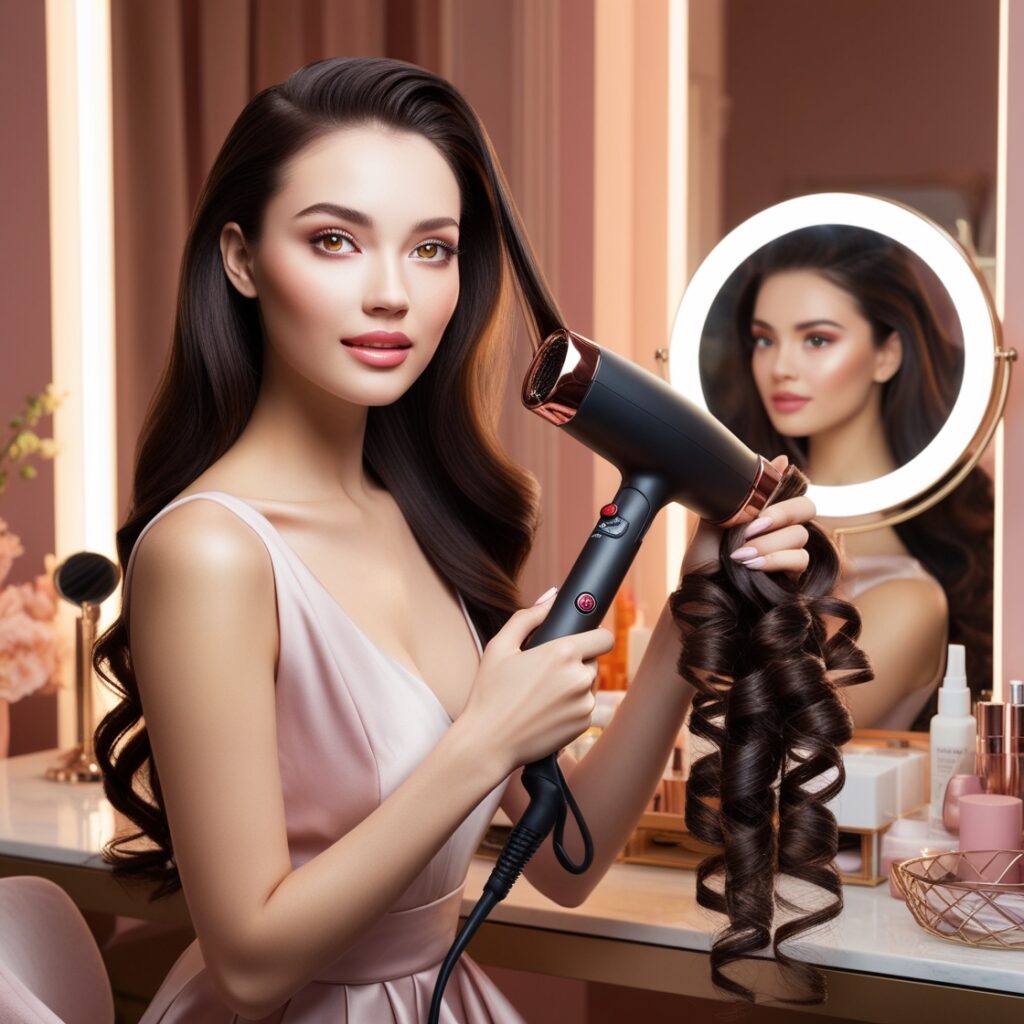
Alternatives to Heat Styling For Avoid Dry and Damaged Hair
1. Air Drying: Let your hair air dry as often as possible. After washing, gently towel dry your hair and allow it to dry naturally. You can braid your hair while it’s damp to achieve natural waves without using heat.
2. Heatless Curling Techniques: Instead of curling irons, try using foam rollers, braids, or twisting techniques to create waves or curls without heat. These methods are gentler on your hair and can achieve beautiful styles with practice.
3. Use a Microfiber Towel: A microfiber towel absorbs water quickly and is gentler on your hair compared to traditional towels, which can cause friction and breakage. Wrap your hair in the towel to remove excess water before air drying.
4. Dry Shampoo: On days when you don’t wash your hair, use a dry shampoo to keep your scalp and hair fresh. This helps you avoid the temptation of using a blow dryer to restyle your hair.
5. Protective Hairstyles: Opt for protective hairstyles such as buns, braids, or twists to keep your hair out of the way and reduce the need for daily styling. These styles minimize breakage and help protect the ends of your hair from damage.
6. Use a Leave-In Conditioner: Apply a leave-in conditioner or a hydrating hair serum to nourish your hair and add moisture, making it easier to manage without the need for heat styling.
Tips If You Must Use Heat Styling
If heat styling is unavoidable, follow these steps to minimize damage:
- Use a Heat Protectant: Always apply a heat protectant spray or serum before using any heat tools. These products create a barrier between the heat and your hair, reducing damage.
- Lower the Temperature: Use the lowest heat setting possible on your styling tools. Higher temperatures may work faster, but they cause more damage.
- Limit Frequency: Reduce how often you use heat styling tools. Give your hair breaks between uses to allow it to recover.
- Opt for Ionic or Ceramic Tools: These tools distribute heat more evenly and cause less damage to the hair compared to traditional metal tools.
Final Thoughts For Heat Styling
Avoiding heat styling, or at least reducing its use, can significantly improve the condition of dry and damaged hair. By embracing heatless techniques and using protective products, you can restore moisture, reduce breakage, and maintain healthier, more resilient hair.
Use a Sulfate-Free Shampoo
Sulfate-free shampoos are a popular choice for people with dry and damaged hair because they provide a gentler cleanse without stripping away the hair’s natural oils. Sulfates, commonly found in traditional shampoos, are harsh cleansing agents that can cause dryness and further damage to already fragile hair.
What Are Sulfates?
Sulfates are detergents found in many shampoos, most commonly sodium lauryl sulfate (SLS) and sodium laureth sulfate (SLES). They create the foamy lather that helps remove dirt and oil from the scalp and hair. However, while effective at cleaning, they can be too strong, especially for those with dry, damaged, or color-treated hair.
Why Use a Sulfate-Free Shampoo?
1. Retains Natural Oils: Sulfate-free shampoos are much gentler on the scalp and hair, helping to retain your hair’s natural oils. This is essential for preventing further dryness and ensuring your hair remains moisturized and healthy.
2. Prevents Moisture Loss: Traditional sulfates can strip moisture from the hair, leaving it dry and brittle. Sulfate-free formulas maintain the hair’s hydration, which is vital for preventing damage and promoting a softer, smoother texture.
3. Gentle on Color-Treated Hair: Sulfates can cause hair color to fade more quickly. If you have color-treated hair, switching to a sulfate-free shampoo helps preserve the vibrancy of your color, extending the life of your dye job.
4. Less Irritating: Sulfates can sometimes cause irritation, especially for those with sensitive scalps or skin conditions like eczema. A sulfate-free shampoo is gentler and less likely to cause redness, itching, or flaking.
5. Reduces Frizz: By locking in moisture and being gentler on the hair shaft, sulfate-free shampoos help reduce frizz and improve manageability. This is especially beneficial for curly or textured hair, which tends to be more prone to dryness.
How to Use Sulfate-Free Shampoo Effectively
1. Massage Thoroughly: Sulfate-free shampoos don’t lather as much as traditional shampoos, but they still cleanse effectively. Gently massage the shampoo into your scalp for a few minutes to break down oil and dirt.
2. Use Warm Water: Warm water helps to open the hair cuticle and allow the shampoo to cleanse more effectively, even without the heavy lather produced by sulfates.
3. Follow with Conditioner: After washing, apply a moisturizing conditioner to replenish moisture and smooth the hair cuticle, especially focusing on the mid-lengths and ends of the hair.
4. Look for Nourishing Ingredients: When choosing a sulfate-free shampoo, opt for one that contains hydrating ingredients such as argan oil, shea butter, aloe vera, or glycerin. These ingredients will help nourish and repair dry, damaged hair.
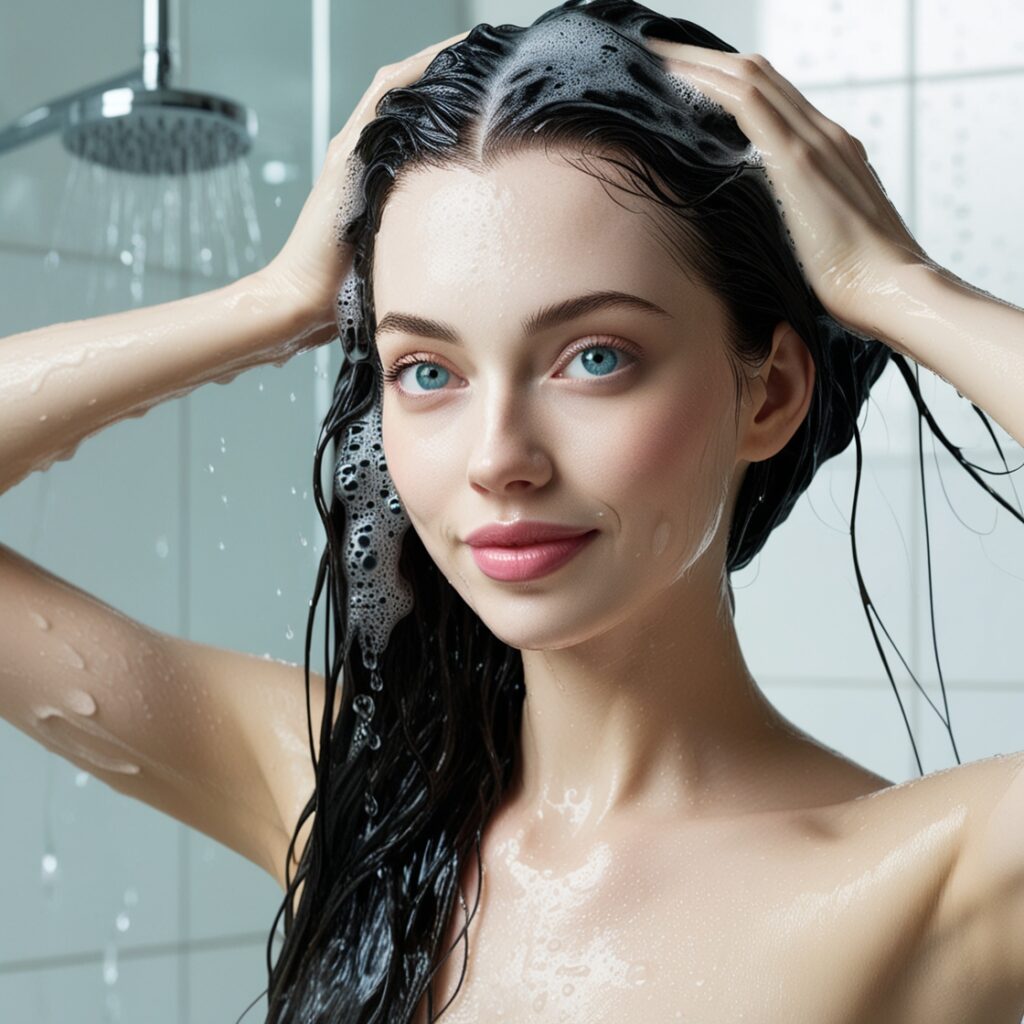
Benefits of Sulfate-Free Shampoo for Dry and Damaged Hair
- Moisture Retention: Helps maintain the hair’s natural moisture levels, preventing further dryness.
- Gentle Cleansing: Cleanses without stripping away essential oils, keeping hair soft and manageable.
- Improves Hair Health: Over time, using sulfate-free shampoo can lead to healthier, shinier, and less frizzy hair.
- Protects the Hair Cuticle: A gentler formula prevents damage to the cuticle, which is crucial for maintaining smooth and strong hair.
Final Thoughts For Shampoo
Using a sulfate-free shampoo is a vital step in caring for dry and damaged hair. By reducing harsh chemical exposure and retaining natural oils, your hair can recover its moisture, shine, and strength. For optimal results, combine sulfate-free shampoo with other hydrating treatments and avoid practices that further damage your hair.
Trim Regularly to Maintain Healthy Hair
Trimming your hair regularly is one of the simplest yet most effective ways to keep it healthy, especially if it’s prone to dryness or damage. Regular trims help remove split ends and prevent damage from traveling up the hair shaft, which can result in breakage and an overall unhealthy appearance.
Why Regular Trims Are Important For Avoid Dry and Damaged Hair
1. Prevents Split Ends: Dry and damaged hair is more likely to develop split ends. Once split ends appear, they can continue splitting up the length of the hair, leading to further damage. Trimming your hair every 6-8 weeks helps prevent split ends from getting worse.
2. Promotes Stronger Hair: By removing the most damaged parts of your hair, regular trims can make your hair look and feel healthier. While trimming doesn’t make your hair grow faster, it prevents breakage, which allows your hair to grow longer and appear fuller over time.
3. Improves Hair Texture: Dry, damaged ends can make your hair look frizzy and rough. A fresh trim smooths out the ends, making your hair appear shinier and more manageable. This is particularly important for those with curly or textured hair, where split ends can make curls lose their shape.
4. Maintains Shape and Style: If you’re trying to maintain a certain hairstyle, regular trims are essential to keep your cut looking fresh. Overgrown, damaged ends can make even the best style look untidy, but trimming helps maintain a polished look.
5. Helps Hydration and Nourishment: Split and damaged ends make it difficult for moisture and nutrients to travel from the scalp to the tips of the hair. Trimming off damaged ends allows the healthier parts of your hair to retain moisture more effectively.
How Often Should You Trim?
- Dry or Damaged Hair: Every 6-8 weeks is ideal to keep damaged hair in check and prevent split ends from worsening.
- Long, Healthy Hair: If your hair isn’t particularly damaged, trimming every 8-12 weeks may be sufficient to maintain health and prevent minor splits.
Signs It’s Time for a Trim
- Frayed Ends: If the ends of your hair look dry, rough, or split, it’s time for a trim.
- Tangled Hair: Dry and damaged ends often tangle easily, making it difficult to brush through your hair smoothly.
- Loss of Shape: Your hairstyle may lose its structure as damaged ends weigh it down, leading to a shapeless appearance.
- Increased Breakage: If you notice more hair breaking off while brushing or styling, this is a sign your ends need a trim.
Final Thoughts a Trim
Trimming regularly is essential for maintaining the overall health and appearance of your hair. By getting rid of split ends and preventing further damage, you can ensure your hair stays strong, smooth, and manageable while allowing it to grow longer without breakage.
Cold Water Rinse For Healthier Hair
A cold water rinse is a simple yet effective method to improve the health and appearance of your hair, especially if it’s dry or damaged. This practice involves rinsing your hair with cold water at the end of your wash or conditioning routine, offering several benefits that help lock in moisture and protect your hair from damage.
Why Cold Water Rinse Is Beneficial For Dry and Damaged Hair
1. Seals the Hair Cuticle: Hair cuticles, the outermost layer of the hair shaft, open up when exposed to warm water and close when exposed to cold water. Rinsing with cold water helps seal the cuticles, which locks in moisture and prevents dryness. A closed cuticle also reduces frizz and gives your hair a smoother, shinier appearance.
2. Improves Shine: Sealing the cuticle with cold water allows the hair surface to lay flat and reflect more light, which makes your hair look shinier and healthier. This is especially helpful for dull or damaged hair that has lost its natural luster.
3. Reduces Frizz: Cold water helps to tame frizz by preventing the cuticles from opening up, which can lead to puffiness and roughness. This is particularly beneficial for people with curly or textured hair, as cold water reduces the risk of frizz after washing.
4. Prevents Hair Breakage: When the cuticles are closed, the hair shaft is better protected from external damage. This makes the hair stronger and less prone to breakage. For dry or damaged hair, a cold water rinse helps in preserving the integrity of the hair strand.
5. Enhances Product Absorption: After applying conditioner, rinsing with cold water helps the conditioner’s ingredients stay within the hair cuticle, making the treatment more effective and allowing your hair to retain moisture longer.
6. Stimulates Scalp Circulation: Cold water can stimulate blood flow to the scalp, promoting a healthy environment for hair growth. While it doesn’t directly cause faster hair growth, a healthier scalp can improve the quality of new hair.
How To Perform Cold Water Rinse
1. Wash and Condition: Wash your hair with a sulfate-free shampoo and apply a moisturizing conditioner as usual.
2. Cool Water Rinse: After rinsing out the conditioner with lukewarm water, switch to cold water for the final rinse. You don’t need to make the water ice cold—just a cool temperature is enough to achieve the benefits.
3. Focus on the Ends: While it’s good to rinse your scalp and roots with cold water, focus the cold water rinse on your mid-lengths and ends, where the hair is usually driest and most damaged.
4. Dry Gently: After the cold water rinse, gently pat your hair dry with a microfiber towel to avoid friction and breakage.
Additional Tips For Use Cold Water
- Use a Cold Water Spray: If the idea of a full cold water rinse is uncomfortable, try spraying your hair with cold water at the end of your shower to get similar benefits for your hair’s health and shine.
- Combine with Leave-In Conditioner: After your cold water rinse, apply a leave-in conditioner or serum to further lock in moisture and add shine.
Final Thoughts Cold Water Rinse For Avoid Dry and Damaged Hair
A cold water rinse is a quick and easy way to enhance the health and appearance of dry and damaged hair. By sealing the cuticle and locking in moisture, this simple habit helps improve shine, reduce frizz, and protect your hair from further damage, making it a great addition to any hair care routine.
Protect from Environmental Stressors
Environmental factors such as UV rays, pollution, wind, and humidity can contribute to dry, damaged hair. These stressors weaken the hair’s structure, strip it of moisture, and make it more prone to breakage and frizz. Protecting your hair from these external elements is essential for maintaining healthy, hydrated hair.
Key Environmental Stressors And Their Effects
1. UV Radiation (Sun Exposure): Prolonged exposure to the sun’s UV rays can break down the protein in hair, weakening its structure and leading to dryness, brittleness, and color fading, especially for color-treated hair.
2. Pollution: Air pollutants, such as dust, dirt, and chemicals, settle on the hair and scalp, leading to buildup and clogging of hair follicles. Pollution also damages the hair’s cuticle, making it more vulnerable to breakage and frizz.
3. Wind: Strong winds can tangle hair and cause mechanical damage due to friction. Wind exposure strips the hair of moisture, making it dry, frizzy, and more prone to split ends.
4. Humidity: High humidity can cause hair to absorb excess moisture from the air, which leads to swelling of the hair cuticle and frizz. Humidity can be especially challenging for those with curly or textured hair.
5. Chlorine and Salt Water: Swimming in chlorinated pools or saltwater can strip the hair of its natural oils, leaving it dry, rough, and prone to damage. Chlorine can also weaken hair and cause color-treated hair to fade.
How To Protect Hair From Environmental Stressors
1. Use Hair Products with UV Protection
- Just like skin, hair needs protection from the sun’s harmful rays. Look for hair products (leave-in conditioners, sprays, or serums) that contain UV filters. These products form a protective barrier against UV radiation, reducing protein damage and preventing color from fading.
2. Wear Hats or Scarves for Avoid Dry and Damaged Hair
- A wide-brimmed hat or a scarf can provide excellent physical protection from both the sun and wind. This helps minimize exposure to UV rays and shields the hair from drying wind. If you swim outdoors, a swim cap can protect your hair from chlorine and saltwater.
3. Rinse After Swimming For Avoid Dry and Damaged Hair
- Always rinse your hair thoroughly with fresh water after swimming in chlorinated pools or the ocean. Chlorine and saltwater can be extremely drying, so rinsing removes these harmful elements before they can cause further damage.
- Consider applying a leave-in conditioner or oil before swimming to create a barrier that protects your hair from absorbing too much chlorine or salt.
4. Use Anti-Pollution Hair Products
- Hair products designed to combat pollution often contain antioxidants that neutralize free radicals caused by environmental pollutants. These products also provide a barrier against dirt and dust, keeping your hair and scalp cleaner for longer.
5. Moisturize Regularly for Avoid Dry and Damaged Hair
- Keep your hair well-moisturized with deep conditioning treatments, oils, and serums. Hydrated hair is less likely to be affected by environmental factors. Ingredients like argan oil, shea butter, and aloe vera help retain moisture and add a protective layer to the hair shaft.
6. Anti-Frizz Serums for Humidity
- Use anti-frizz serums or creams to shield your hair from the effects of humidity. These products help smooth the cuticle, preventing frizz and keeping hair sleek and manageable even in damp conditions.
7. Avoid Excessive Heat Styling for Avoid Dry and Damaged Hair
- Limit heat styling, as it weakens hair and makes it more susceptible to environmental damage. If you must use heat tools, apply a heat protectant spray to minimize damage.
8. Regular Hair Masks for Avoid Dry and Damaged Hair
- Treat your hair to nourishing hair masks once or twice a week. Masks with hydrating ingredients like coconut oil, avocado, or honey help restore lost moisture and strengthen the hair against environmental stressors.
Additional Tips For Avoid Dry and Damaged Hair
- Use a Silk Scarf at Night: Wearing a silk scarf or sleeping on a silk pillowcase reduces friction and protects your hair from the mechanical damage caused by tossing and turning while you sleep.
- Detangle Gently: After exposure to wind or other harsh conditions, use a wide-tooth comb to detangle your hair gently. This minimizes breakage caused by tugging or pulling on knotted hair.
Final Thoughts To Protect Hair From Environmental Stressors
Protecting your hair from environmental stressors is crucial for maintaining its health, moisture, and shine. By using protective products, moisturizing regularly, and avoiding excessive exposure to damaging elements, you can keep your hair strong and resilient against the challenges posed by the environment.
Use Silk Pillowcase For Healthier Hair
Switching to a silk pillowcase is a simple yet highly effective way to care for your hair, especially if it’s prone to dryness, frizz, or breakage. Silk pillowcases offer numerous benefits over traditional cotton pillowcases by reducing friction, retaining moisture, and promoting overall hair health.
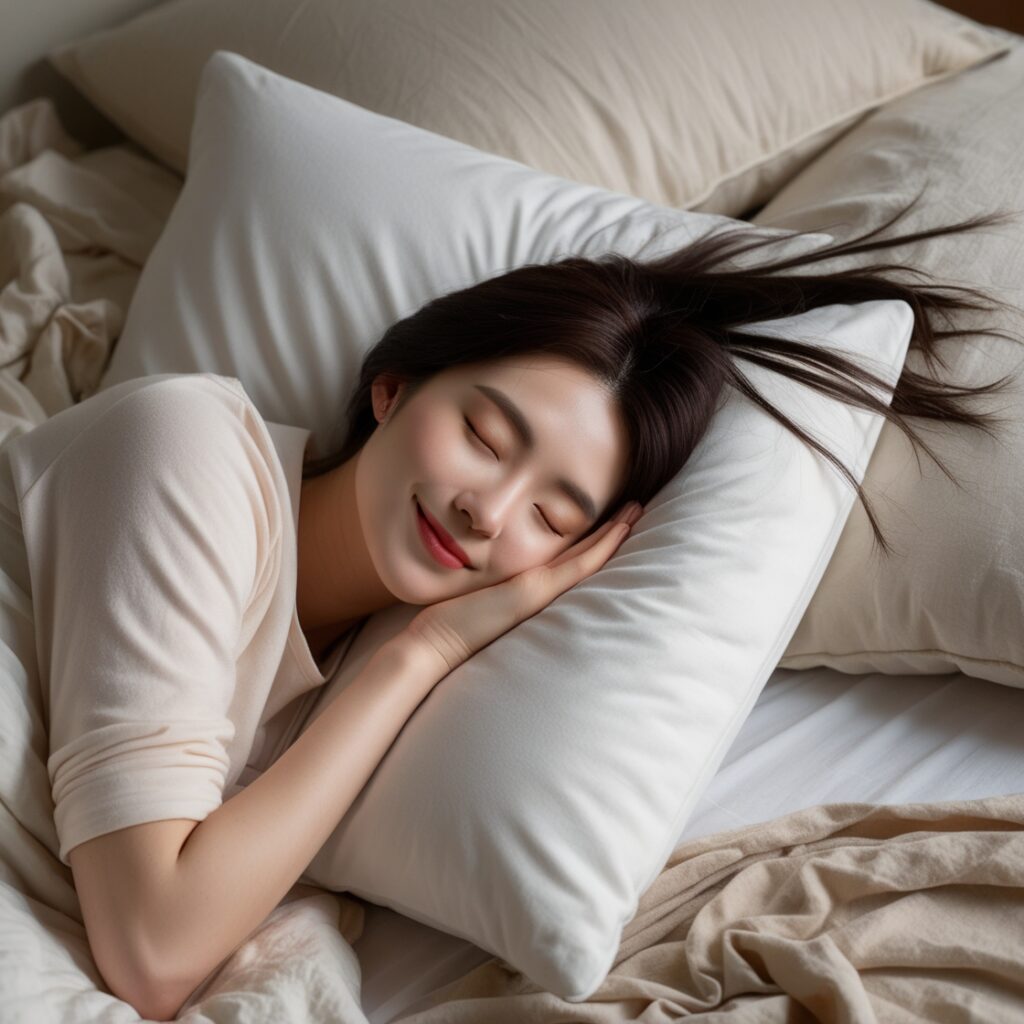
Why Use a Silk Pillowcase for Avoid Dry and Damaged Hair?
1. Reduces Friction: Unlike cotton, which has a rougher texture, silk is smooth and allows your hair to glide over it. This reduced friction minimizes hair breakage, split ends, and frizz caused by tossing and turning during sleep. Less friction means less damage, which is especially important for those with brittle or fragile hair.
2. Retains Hair Moisture: Cotton pillowcases tend to absorb moisture from your hair, leaving it dry and prone to damage. Silk, on the other hand, doesn’t absorb as much moisture, helping your hair retain its natural oils and hydration. This is crucial for people with dry or damaged hair, as it helps prevent further dehydration.
3. Prevents Frizz: By reducing friction and helping your hair retain moisture, silk pillowcases can significantly reduce frizz, especially for those with curly or textured hair. The smooth surface helps keep the cuticle layer of your hair intact, leading to smoother, more manageable hair.
4. Promotes Shine: The gentle, non-absorbent nature of silk keeps your hair’s natural oils intact, resulting in healthier, shinier hair. This is especially helpful for people dealing with dull, damaged hair that has lost its natural luster.
5. Protects Hair Styles: If you have a particular hairstyle—such as a blowout, curls, or braids—sleeping on a silk pillowcase helps preserve the style overnight. The smooth surface of silk prevents hair from getting tangled or disrupted, allowing your hairstyle to last longer without the need for restyling.
How Silk Pillowcases Benefit Different Hair Types
- Curly/Coily Hair: Curly and textured hair is naturally more prone to dryness and frizz. A silk pillowcase helps to maintain moisture and reduces the risk of tangling and breakage, keeping curls defined and smooth.
- Fine/Fragile Hair: Fine hair tends to break easily when exposed to friction. Silk’s smooth texture minimizes pulling and tugging, reducing the chances of breakage and thinning.
- Color-Treated Hair: Hair that has been dyed or chemically treated is often more fragile and prone to dryness. Silk pillowcases help retain moisture and reduce the stress that traditional pillowcases can place on sensitive, color-treated hair.
- Straight Hair: For straight hair, silk pillowcases help maintain sleekness and reduce the likelihood of waking up with frizzy or tangled strands.
Additional Benefits Of Silk Pillowcases
1. Hypoallergenic: Silk is naturally hypoallergenic and resistant to dust mites, making it a great option for those with allergies or sensitive skin.
2. Better for Skin: In addition to benefiting your hair, silk pillowcases are gentle on your skin. They help reduce facial friction and prevent creases, which may lead to fewer wrinkles over time.
3. Temperature Regulation: Silk pillowcases are breathable and naturally regulate temperature, keeping you cool in the summer and warm in the winter. This helps prevent night sweats that can exacerbate scalp issues like dryness.
How To Care For Your Silk Pillowcase
- Hand Wash or Use a Gentle Cycle: To maintain the quality of your silk pillowcase, wash it by hand or use a gentle machine cycle with mild detergent. Avoid bleach and harsh chemicals that can degrade the fabric.
- Air Dry: Always air dry your silk pillowcase to preserve its softness and sheen. Avoid using a dryer, as the heat can damage the delicate fibers.
Final Thoughts For Pillowcase
Using a silk pillowcase is a small but impactful change that can greatly improve the health of your hair. By reducing friction, retaining moisture, and preventing damage, a silk pillowcase helps keep your hair smoother, healthier, and more manageable. Whether you have dry, curly, fine, or chemically treated hair, this simple switch can make a big difference in your hair care routine.
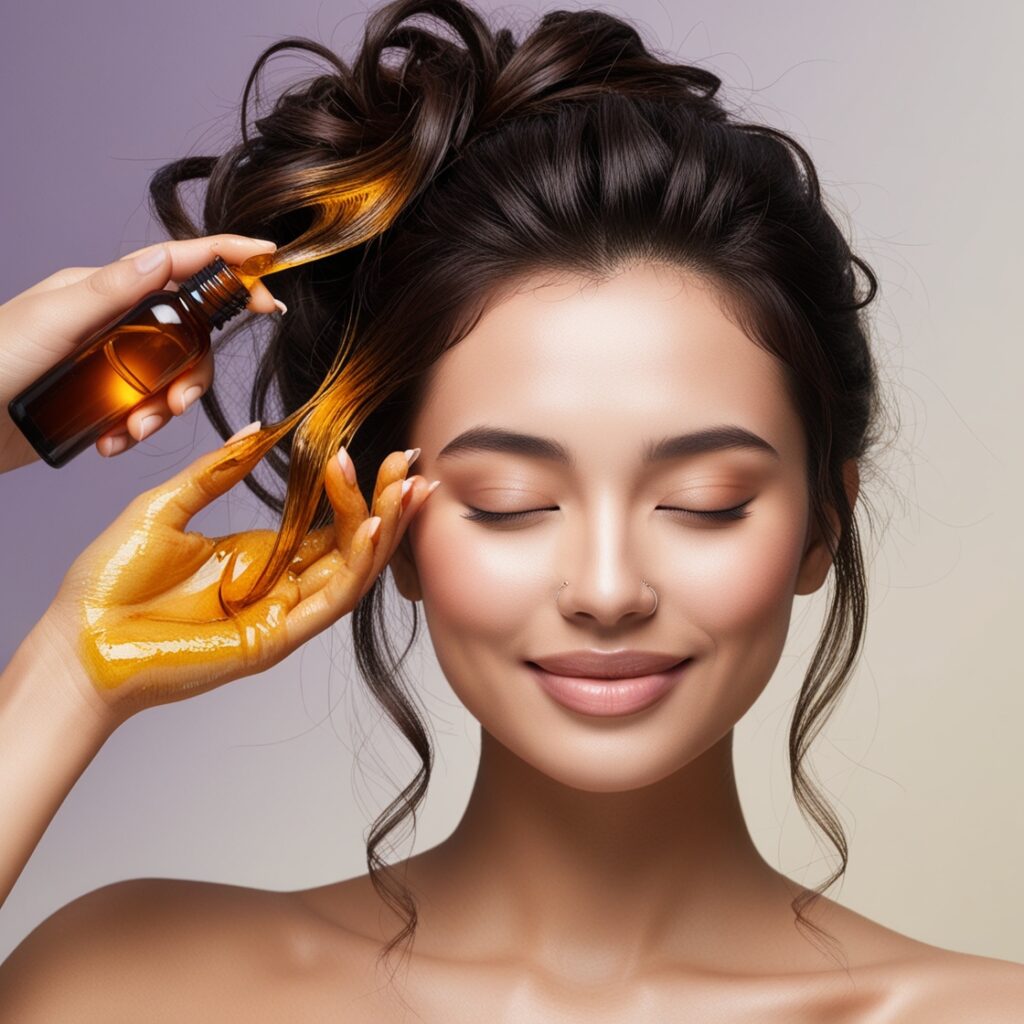
Hydrating Oils For Dry And Damaged Hair
Hydrating oils are essential for restoring moisture, repairing damage, and improving the overall health of dry and damaged hair. These oils penetrate the hair shaft, locking in moisture, and provide nutrients that strengthen hair and protect it from further damage. They are particularly beneficial for hair that is exposed to heat styling, chemical treatments, or environmental stressors.
Benefits for Avoid Dry and Damaged Hair
1. Deep Moisture: Hydrating oils help to replenish the moisture that dry and damaged hair lacks. By penetrating the hair shaft, they provide long-lasting hydration, making hair softer and more manageable.
2. Seals in Moisture: Oils create a protective barrier around the hair shaft, locking in moisture and preventing water loss. This helps keep hair hydrated for longer periods, reducing dryness and frizz.
3. Repairs Damage: Many hydrating oils are rich in fatty acids and vitamins that help repair damaged hair, reduce breakage, and promote healthy hair growth. Regular use of these oils can strengthen weak and brittle strands.
4. Reduces Frizz: Hydrating oils smooth the hair cuticle, reducing frizz and enhancing shine. This is especially helpful for people with curly, coarse, or frizzy hair that tends to become unruly when dry.
5. Protects Against Heat and Environmental Damage: Oils can form a protective layer over the hair, shielding it from heat damage caused by styling tools and environmental stressors like UV rays, pollution, and humidity.
Top Hydrating Oils For Avoid Dry and Damaged Hair
1. Argan Oil
- Known as “liquid gold,” argan oil is rich in vitamin E, antioxidants, and fatty acids. It hydrates deeply, adds shine, and reduces frizz without leaving hair greasy. Argan oil is perfect for restoring softness and strength to dry, brittle hair.
Best for: All hair types, especially dry, coarse, or frizzy hair.
2. Coconut Oil
- Coconut oil is a highly effective hydrating oil due to its ability to penetrate the hair shaft and prevent protein loss. It is excellent for deep conditioning and helps to reduce breakage and split ends.
Best for: Thick, dry, or curly hair that needs deep hydration.
3. Jojoba Oil
- Jojoba oil closely mimics the natural oils (sebum) produced by your scalp, making it an excellent choice for moisturizing without clogging pores or making hair greasy. It helps balance oil production and adds moisture to both the hair and scalp.
Best for: Oily, dry, or dandruff-prone hair.
4. Olive Oil
- Olive oil is a rich and nourishing oil that is particularly effective at softening and smoothing damaged hair. It locks in moisture and provides essential nutrients that strengthen hair strands.
Best for: Thick, coarse, or severely damaged hair.
5. Avocado Oil
- Avocado oil is packed with vitamins A, D, and E, as well as omega-3 fatty acids, making it ideal for deeply hydrating and repairing damaged hair. It is lightweight and easily absorbed into the hair shaft, promoting shine and softness.
Best for: Dry, damaged, or chemically treated hair.
6. Sweet Almond Oil
- Rich in vitamins E and B7 (biotin), almond oil helps to strengthen hair, promote growth, and add a healthy sheen. It is lightweight and perfect for sealing in moisture without weighing hair down.
Best for: Fine to medium hair that needs hydration without heaviness.
7. Grapeseed Oil
- Grapeseed oil is a lightweight, non-greasy oil that moisturizes hair and helps to protect it from heat damage. It contains antioxidants and vitamin E, which support hair strength and shine.
Best for: Fine, oily, or heat-styled hair.
How to Use Hydrating Oils For Avoid Dry and Damaged Hair
1. Pre-Wash Treatment: Apply a generous amount of oil to dry hair before washing to create a deep conditioning treatment. Leave the oil on for 30 minutes to several hours, then wash as usual with a gentle shampoo. This helps to hydrate and protect your hair from shampoo stripping away too much moisture.
2. Post-Wash Moisturizer: After washing your hair, apply a small amount of oil to the mid-lengths and ends to lock in moisture and add shine. This works as a leave-in treatment to keep your hair hydrated throughout the day.
3. Heat Protectant: Before using heat styling tools, apply a small amount of oil to your hair to protect it from the damaging effects of heat. Oils like grapeseed or argan oil work particularly well as natural heat protectants.
4. Overnight Treatment: For deep hydration, apply a hydrating oil to your hair and scalp before bed and leave it in overnight. In the morning, wash your hair to remove excess oil and reveal softer, more nourished hair.
5. Scalp Treatment: Massage oil into your scalp to nourish and moisturize the roots, which can help with dry scalp, dandruff, and overall hair growth. Oils like jojoba and coconut are great for this purpose.
Final Thoughts Hydrating Oils For Dry and Damaged Hair
Hydrating oils are an essential part of a hair care routine for anyone dealing with dryness or damage. They help restore moisture, repair breakage, and improve the overall health and appearance of your hair. Whether you use them as a pre-wash treatment, leave-in conditioner, or overnight mask, these oils can transform dry, damaged hair into softer, shinier, and more resilient locks.
Eat Balanced Diet For Avoid Dry and Damaged Hair
A balanced diet is fundamental to maintaining healthy hair. What you eat has a direct impact on the health of your hair, affecting its strength, growth, and overall appearance. A diet rich in essential nutrients supports hair follicles, promotes growth, and prevents common issues like dryness and breakage.
Key For Healthy Hair
1. Protein
- Why It Matters: Hair is primarily made of a protein called keratin. Adequate protein intake is crucial for hair growth and strength.
- Sources: Chicken, turkey, fish, eggs, dairy products, legumes, nuts, and seeds.
2. Omega-3 Fatty Acids
- Why It Matters: Omega-3 fatty acids nourish the hair follicles and promote healthy scalp conditions, reducing dryness and flakiness.
- Sources: Fatty fish (such as salmon and mackerel), flaxseeds, chia seeds, walnuts, and hemp seeds.
3. Vitamins A and C
- Why It Matters: Vitamin A supports the production of sebum, which keeps the scalp moisturized. Vitamin C is an antioxidant that helps protect hair follicles from damage and aids in collagen production, essential for hair strength.
- Sources: Vitamin A—sweet potatoes, carrots, spinach. Vitamin C—citrus fruits (like oranges and grapefruits), strawberries, bell peppers.
4. Vitamin D
- Why It Matters: Vitamin D supports the creation of new hair follicles and helps in maintaining healthy hair. Deficiency in vitamin D can lead to hair loss.
- Sources: Sunlight exposure, fortified dairy products, fatty fish, and mushrooms.
5. Iron
- Why It Matters: Iron is essential for carrying oxygen to hair follicles. Iron deficiency can lead to hair loss and anemia.
- Sources: Red meat, chicken, fish, lentils, spinach, and fortified cereals.
6. Zinc
- Why It Matters: Zinc plays a role in hair tissue growth and repair. It also helps maintain the oil glands around the hair follicles, supporting a healthy scalp.
- Sources: Meat, shellfish, nuts, seeds, and whole grains.
7. Biotin (Vitamin B7)
- Why It Matters: Biotin supports the production of keratin and improves hair strength and elasticity. It’s often used in supplements aimed at improving hair health.
- Sources: Eggs, nuts, seeds, salmon, and avocados.
8. Folate (Vitamin B9)
- Why It Matters: Folate supports cell division and helps in the creation of healthy new cells, including hair cells.
- Sources: Leafy greens, legumes, nuts, and fortified cereals.
9. Vitamin E
- Why It Matters: Vitamin E is an antioxidant that helps to reduce oxidative stress on the scalp, promoting healthy hair growth and reducing hair loss.
- Sources: Nuts, seeds, spinach, and avocados.
10. Water
- Why It Matters: Staying hydrated is crucial for overall health and helps maintain moisture levels in the hair and scalp, preventing dryness and brittleness.
- Sources: Drinking plenty of water and consuming water-rich foods like fruits and vegetables.
Tips For Maintaining a Hair-Healthy Diet
1. Incorporate a Variety of Foods: Aim for a diverse diet that includes a mix of proteins, healthy fats, and a wide range of fruits and vegetables to ensure you get all necessary nutrients.
2. Avoid Crash Diets: Rapid weight loss and restrictive diets can lead to nutrient deficiencies and hair loss. Focus on a balanced approach to eating.
3. Healthy Fats Are Key: Include sources of healthy fats in your diet to support scalp health and hair moisture. Avocados, nuts, and olive oil are excellent options.
4. Limit Processed Foods: Processed foods often lack essential nutrients and can contribute to poor hair health. Opt for whole, nutrient-dense foods whenever possible.
5. Consider Supplements: If you’re unable to get all necessary nutrients through diet alone, consider supplements like biotin, fish oil, or multivitamins. Consult with a healthcare provider before starting any new supplements.
Final Thoughts For Diet
Eating a balanced diet rich in essential nutrients is crucial for maintaining healthy, strong, and vibrant hair. By focusing on a variety of nutrient-dense foods and staying hydrated, you can support optimal hair health and reduce the risk of dryness, breakage, and other common hair issues. A healthy diet not only benefits your hair but also enhances your overall well-being.
Final Thought For Dry and Damaged Hair
Combining these remedies with consistent, gentle hair care can restore moisture, strength, and shine to dry and damaged hair. Be patient, as improvements may take time, especially with significant damage. Regular hydration and protection are key to maintaining healthier, more resilient hair.
